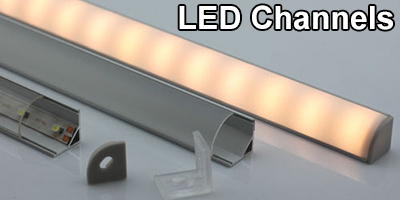When you use a LED flashlight, you will feel it getting hot on the shell, especially the Aluminum flashlight. Is it normal?
Actually, the shell is hot means your flashlight may has a good heat dissipation. If it is not hot on its shell, it is smoldering, so that the LED is easily damaged.
When LED lamp is lighting, it converts electrical energy into light energy. During the conversion process, most of the electrical energy is converted into heat energy, and only a small part is converted into light energy. Therefore, you will feel the shell of the flashlight is hot when it is working, and the heat comes from high-power LEDs. If you feel the heat quickly, that means the internal components of the flashlight have a high thermal conductivity, and the heat is spread quickly and dissipated very well. This is a normal heat dissipation phenomenon.
Conversely, if you don't feel the heat in the shell of your flashlight, it means that the heat is accumulated inside the LED, which is dangerous to the LED. The LED will deplete too quickly due to the high temperature, resulting in a sharp decrease in life. After using a flashlight with poor heat dissipation for a period of time, the core part of the LED will turn yellow and the brightness will drop to about 50%. This is because the temperature causes the LED to age too fast.
High quality flashlight is designed with corresponding heat dissipation and current control to ensure that the LED can work at a proper temperature.
Any more opinions are welcomed!
Actually, the shell is hot means your flashlight may has a good heat dissipation. If it is not hot on its shell, it is smoldering, so that the LED is easily damaged.
When LED lamp is lighting, it converts electrical energy into light energy. During the conversion process, most of the electrical energy is converted into heat energy, and only a small part is converted into light energy. Therefore, you will feel the shell of the flashlight is hot when it is working, and the heat comes from high-power LEDs. If you feel the heat quickly, that means the internal components of the flashlight have a high thermal conductivity, and the heat is spread quickly and dissipated very well. This is a normal heat dissipation phenomenon.
Conversely, if you don't feel the heat in the shell of your flashlight, it means that the heat is accumulated inside the LED, which is dangerous to the LED. The LED will deplete too quickly due to the high temperature, resulting in a sharp decrease in life. After using a flashlight with poor heat dissipation for a period of time, the core part of the LED will turn yellow and the brightness will drop to about 50%. This is because the temperature causes the LED to age too fast.
High quality flashlight is designed with corresponding heat dissipation and current control to ensure that the LED can work at a proper temperature.
Any more opinions are welcomed!

